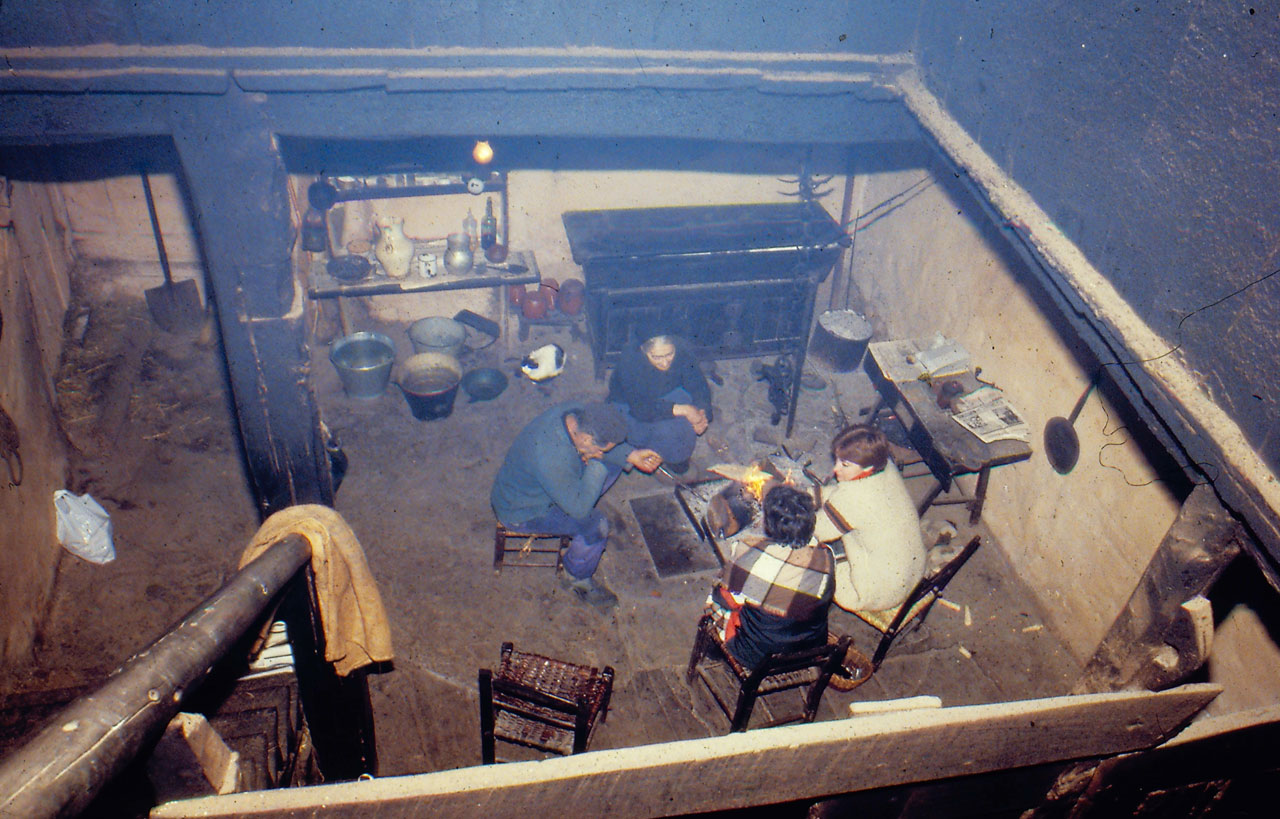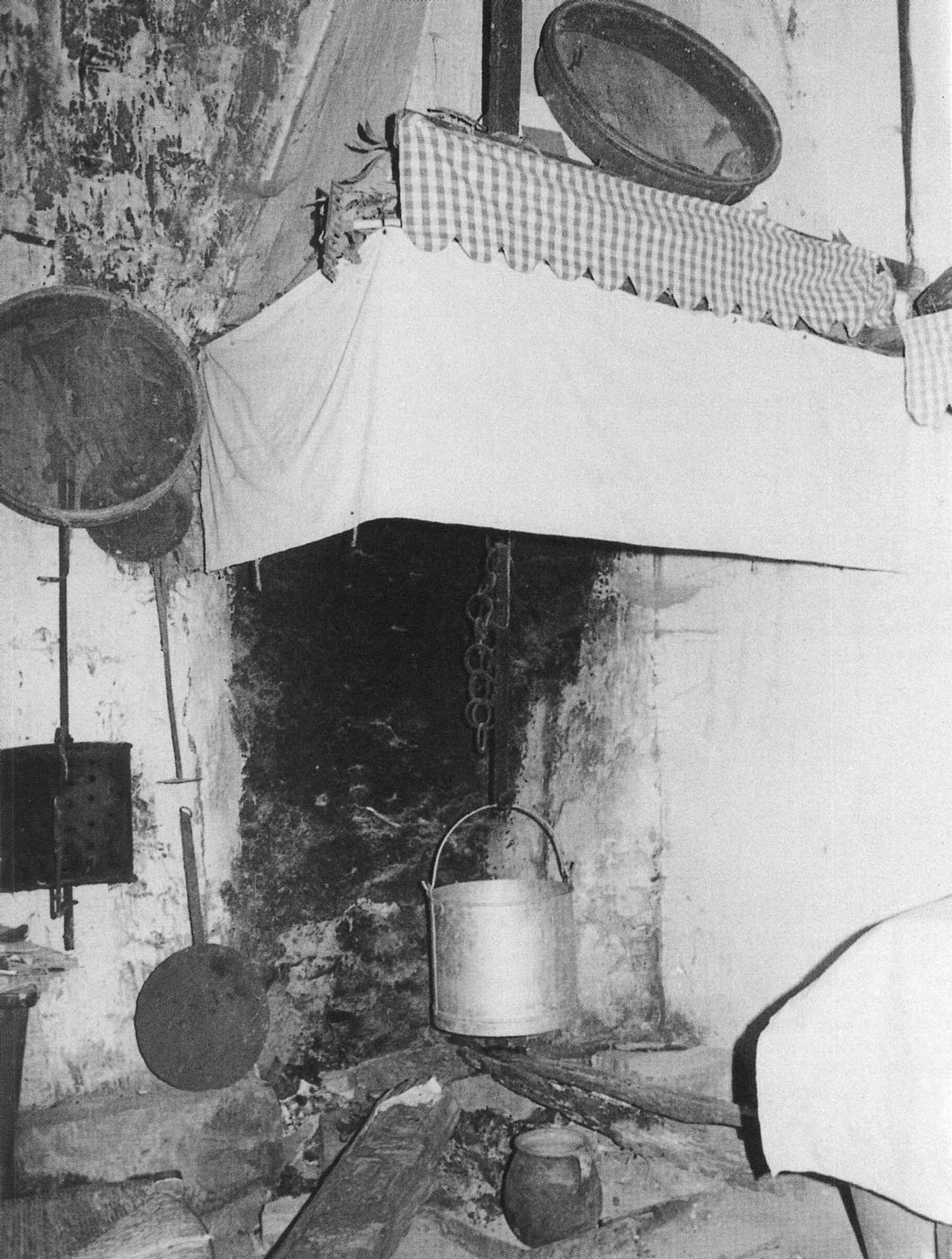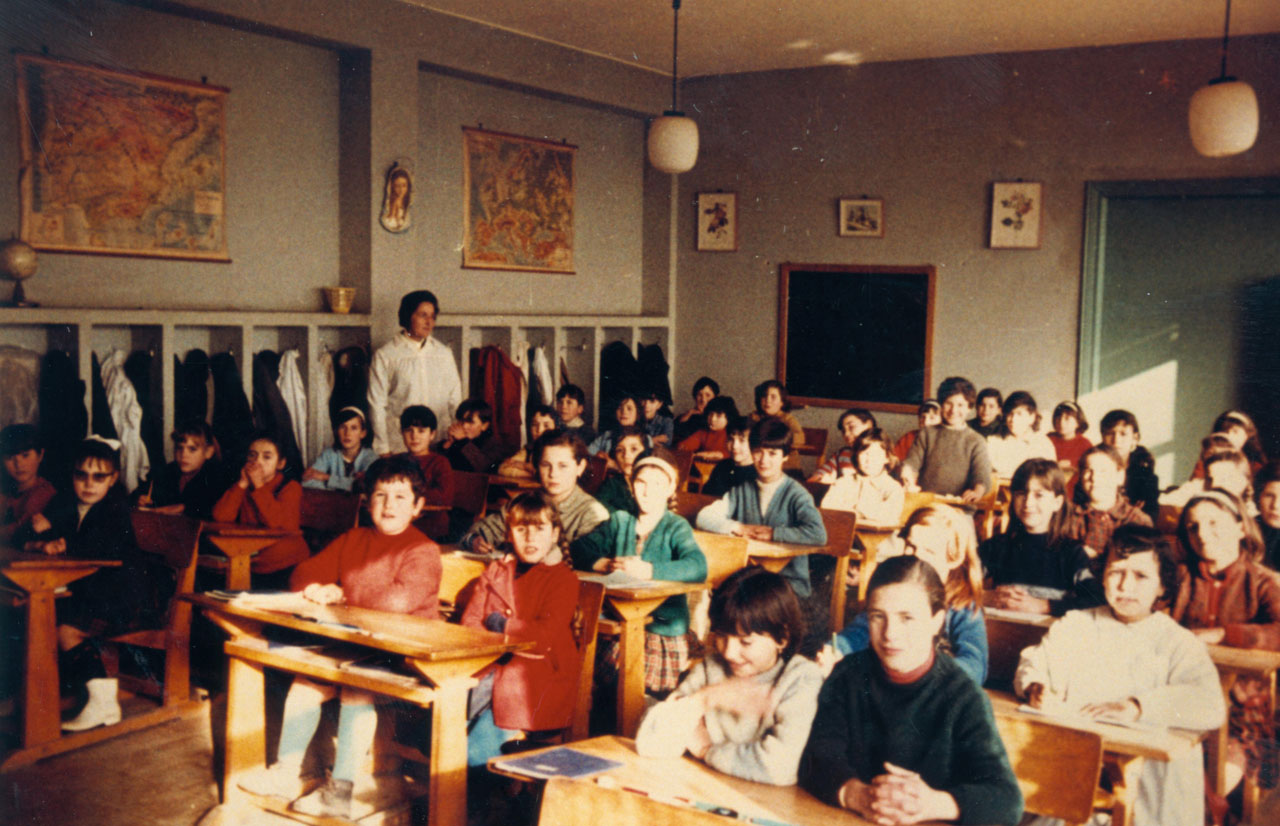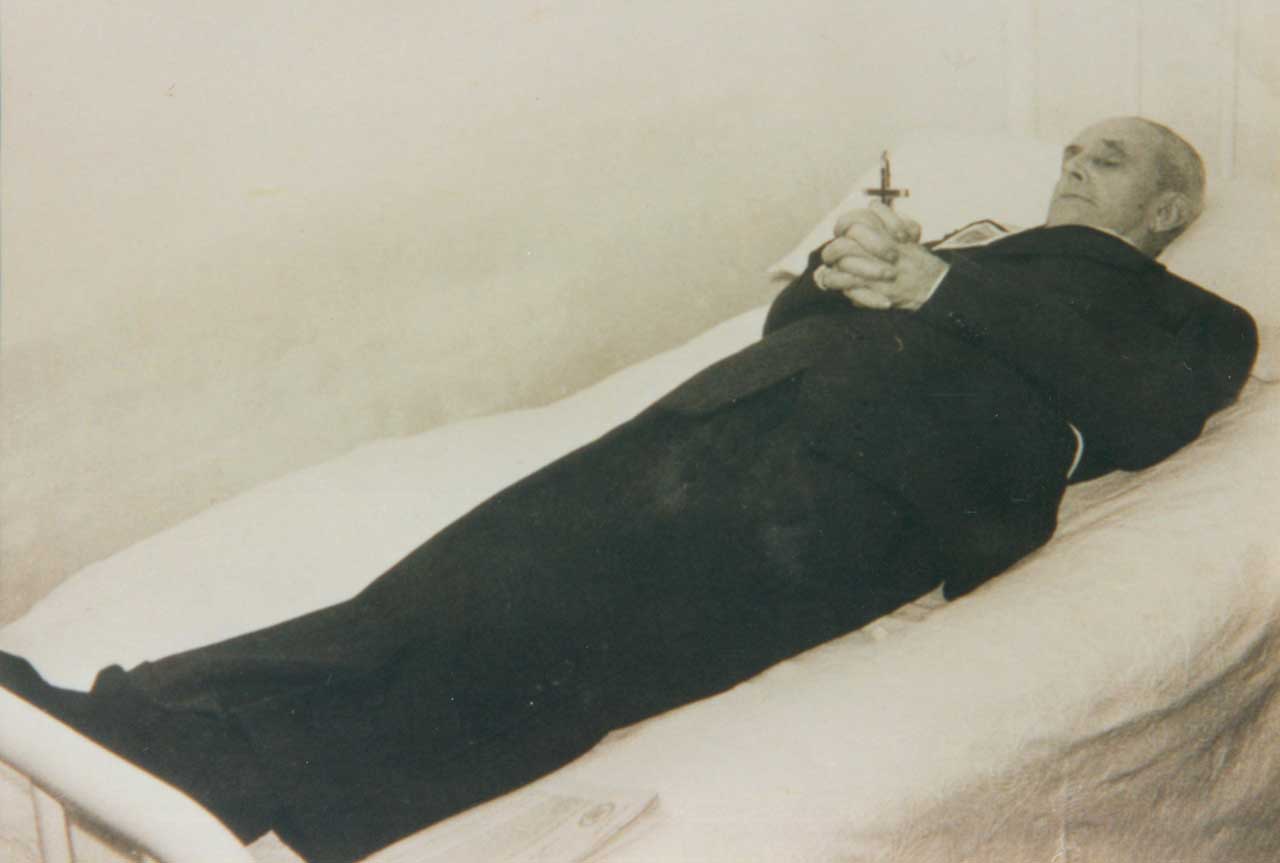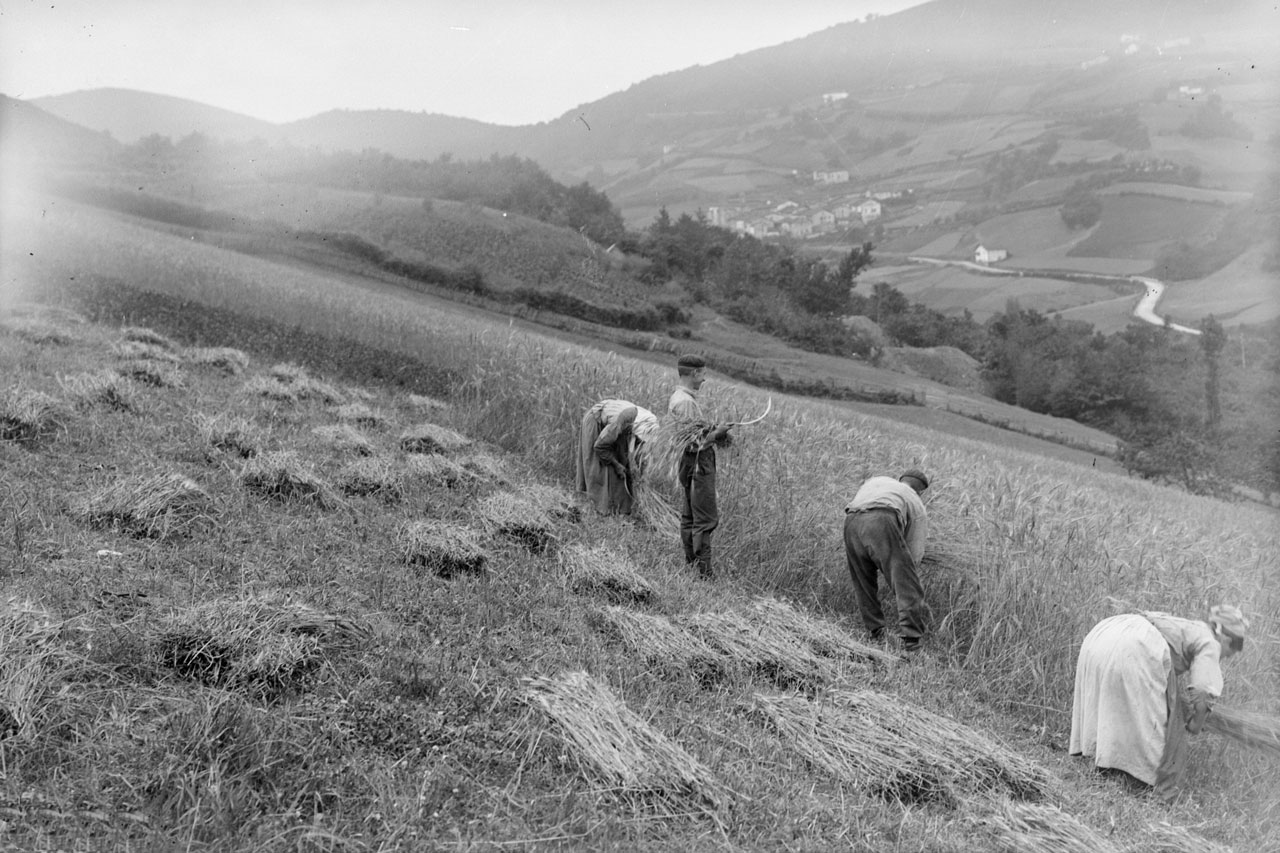Diferencia entre revisiones de «Main Page/en»
De Atlas Etnográfico de Vasconia
| Línea 92: | Línea 92: | ||
It consisted of rolling a metal or wooden hoop along using a wire rod with a hook at its end to steer or move it.|]==== | It consisted of rolling a metal or wooden hoop along using a wire rod with a hook at its end to steer or move it.|]==== | ||
| − | ====[/atlas/juegos/A-chorro-morro.jpg|Leapfrog jumping. Source: Iñigo Irigoyen, José. Folklore Alavés. Vitoria-Gasteiz: Chartered Government of Álava, 1949.|''Astoka'' <br />One or more participants bend down in a position that is usually called a frog and the others jump over them.|| | + | ====[/atlas/juegos/A-chorro-morro.jpg|Leapfrog jumping. Source: Iñigo Irigoyen, José. Folklore Alavés. Vitoria-Gasteiz: Chartered Government of Álava, 1949.|''Astoka'' <br />One or more participants bend down in a position that is usually called a frog and the others jump over them.||]==== |
| − | ====[/atlas/juegos/A-chorro-morro.jpg|Vegetal clothing and accessories. Egozkue (N), 1967. Source: José Zufiaurre, Etniker Euskalerria Groups.|Akerrak adarrak okerrak ditu, <br />adarrak okerrak akerrak ditu, <br />okerrak adarrak akerrak ditu. <br /><br />''Tongue-twister''|| | + | ====[/atlas/juegos/A-chorro-morro.jpg|Vegetal clothing and accessories. Egozkue (N), 1967. Source: José Zufiaurre, Etniker Euskalerria Groups.|Akerrak adarrak okerrak ditu, <br />adarrak okerrak akerrak ditu, <br />okerrak adarrak akerrak ditu. <br /><br />''Tongue-twister''||]==== |
| − | ====[/atlas/juegos/A-enfermeras-Getxo-1993.jpg|Doctors and nurses. Getxo (B), 1993. Source: Jon Elorriaga, Etniker Euskalerria Groups.|Txikia banintzen, handia banintzen, maiatzerako burutu nintzen. <br />''Riddle''|| | + | ====[/atlas/juegos/A-enfermeras-Getxo-1993.jpg|Doctors and nurses. Getxo (B), 1993. Source: Jon Elorriaga, Etniker Euskalerria Groups.|Txikia banintzen, handia banintzen, maiatzerako burutu nintzen. <br />''Riddle''||]==== |
| − | ====[/atlas/juegos/A-chorro-morro.jpg|Group of children. Zeanuri (B), 1920. Source: Labayru Fundazioa Photograhic Archive: Felipe Manterola Collection.|Children in the traditional society, both in towns and in countryside, only really had the toys that they made themselves. Games were more common than toys, and the latter were just a basis for the former.|| | + | ====[/atlas/juegos/A-chorro-morro.jpg|Group of children. Zeanuri (B), 1920. Source: Labayru Fundazioa Photograhic Archive: Felipe Manterola Collection.|Children in the traditional society, both in towns and in countryside, only really had the toys that they made themselves. Games were more common than toys, and the latter were just a basis for the former.||]==== |
| − | ====[/atlas/juegos/Ninos-con-patinetes-y-triciclos-en-la-Florida.jpg|Children riding scooters and tricycles at Florida Park. Source: Municipal Archive of Vitoria-Gasteiz: Ceferino Yanguas.|Humans play games throughout their lives; however, that activity has a clearly different role for children and adults.|| | + | ====[/atlas/juegos/Ninos-con-patinetes-y-triciclos-en-la-Florida.jpg|Children riding scooters and tricycles at Florida Park. Source: Municipal Archive of Vitoria-Gasteiz: Ceferino Yanguas.|Humans play games throughout their lives; however, that activity has a clearly different role for children and adults.||]==== |
| − | ====[/atlas/juegos/Pin-pin-zarramacatin-Carranza-1993.jpg|''Pin, pin, zarramacatín''. Carranza (B), 1993. Source: Luis Manuel Peña, Etniker Euskalerria Groups.|Honek arrautza ekarri, <br />honek erreten ipini, <br />honek gatza eman, <br />honek pixka bat probatu, <br />honek dena jan! <br /><br />''Game with fingers''|| | + | ====[/atlas/juegos/Pin-pin-zarramacatin-Carranza-1993.jpg|''Pin, pin, zarramacatín''. Carranza (B), 1993. Source: Luis Manuel Peña, Etniker Euskalerria Groups.|Honek arrautza ekarri, <br />honek erreten ipini, <br />honek gatza eman, <br />honek pixka bat probatu, <br />honek dena jan! <br /><br />''Game with fingers''||]==== |
| − | ====[/atlas/juegos/Beasaingo-haurrak-Egozkuen-1967.jpg|Children from Beasain in Egozkuen (N), 1967. Source: José Zufiaurre, Etniker Euskalerria Groups.|''Txori-ikasten'' <br />They played looking for birds’ nests and thus learnt about their habits, their songs, the way the nests were built…|| | + | ====[/atlas/juegos/Beasaingo-haurrak-Egozkuen-1967.jpg|Children from Beasain in Egozkuen (N), 1967. Source: José Zufiaurre, Etniker Euskalerria Groups.|''Txori-ikasten'' <br />They played looking for birds’ nests and thus learnt about their habits, their songs, the way the nests were built…||]==== |
| − | ====[/atlas/juegos/Lanzando-la-trompa-Getxo-1993.jpg|Playing with spinning tops. Getxo (B), 1993. Source: Jon Elorriaga, Etniker Euskalerria Groups.|Changes in the adult world are also necessarily reflected in the children’s world. It should not be forgotten that those changes also affect the world of beliefs, convictions and rites underlying many traditional games; many of which would be stripped of meaning, some would fall into disuse, others would persist and would adapt to the new circumstances.|| | + | ====[/atlas/juegos/Lanzando-la-trompa-Getxo-1993.jpg|Playing with spinning tops. Getxo (B), 1993. Source: Jon Elorriaga, Etniker Euskalerria Groups.|Changes in the adult world are also necessarily reflected in the children’s world. It should not be forgotten that those changes also affect the world of beliefs, convictions and rites underlying many traditional games; many of which would be stripped of meaning, some would fall into disuse, others would persist and would adapt to the new circumstances.||]==== |
| − | ====[/atlas/juegos/Jugando-al-corro-Larraul.jpg|Ring-a-ring o’ roses. Larraul (G). Source: Antxon Aguirre, Etniker Euskalerria Groups.|''Korruka'' <br />Al corro de las patatas, <br />naranjas y limones, <br />como comen los señores, <br />alupé, alupé, <br />sentadito me quedé.|| | + | ====[/atlas/juegos/Jugando-al-corro-Larraul.jpg|Ring-a-ring o’ roses. Larraul (G). Source: Antxon Aguirre, Etniker Euskalerria Groups.|''Korruka'' <br />Al corro de las patatas, <br />naranjas y limones, <br />como comen los señores, <br />alupé, alupé, <br />sentadito me quedé.||]==== |
| − | ====[/atlas/juegos/Asto-astoka-Zeanuri-1920.jpg|Leapfrog. Zeanuri (B), 1920. Source: Labayru Fundazioa Photograhic Archive: Felipe Manterola Collection.|—Arre, arre, <br />mandako, bihar Tolosarako, <br />etzi Panplonarako. <br />—Handik zer ekarriko? <br />—Zapata ta garriko. <br /><br />''Children’s chant''|| | + | ====[/atlas/juegos/Asto-astoka-Zeanuri-1920.jpg|Leapfrog. Zeanuri (B), 1920. Source: Labayru Fundazioa Photograhic Archive: Felipe Manterola Collection.|—Arre, arre, <br />mandako, bihar Tolosarako, <br />etzi Panplonarako. <br />—Handik zer ekarriko? <br />—Zapata ta garriko. <br /><br />''Children’s chant''||]==== |
| − | ====[/atlas/juegos/Jugando-al-corro-Larraul.jpg|Drawing of lots. Zeanuri (B), 1993. Source: Ander Manterola, Etniker Euskalerria Groups.|Txirristi-mirristi, gerrena, plat, <br />olio-zopa, kikili-salda, <br />urrup edan edo klik, <br />ikimilikiliklik. <br /><br />''Drawing lots chant''|| | + | ====[/atlas/juegos/Jugando-al-corro-Larraul.jpg|Drawing of lots. Zeanuri (B), 1993. Source: Ander Manterola, Etniker Euskalerria Groups.|Txirristi-mirristi, gerrena, plat, <br />olio-zopa, kikili-salda, <br />urrup edan edo klik, <br />ikimilikiliklik. <br /><br />''Drawing lots chant''||]==== |
| − | ====[/atlas/juegos/Pin-pin-zarramacatin-Carranza-1993.jpg|Watching over the child. Source: Novedades. Donostia, 1914.|Obabatxua lo ta lo, <br />zuk orain eta nik gero; <br />zeuk gura dozun orduren baten, <br />biok egingo dogu lo ta lo. <br /><br />''Lullaby''|| | + | ====[/atlas/juegos/Pin-pin-zarramacatin-Carranza-1993.jpg|Watching over the child. Source: Novedades. Donostia, 1914.|Obabatxua lo ta lo, <br />zuk orain eta nik gero; <br />zeuk gura dozun orduren baten, <br />biok egingo dogu lo ta lo. <br /><br />''Lullaby''||]==== |
Revisión del 15:00 10 feb 2020
House and Family in the Basque Country


House and Family in the Basque Country
Su bako etxea, gorputz odol bagea. A house without fire is like a body without blood.
Family Diet in the Basque Country


Family Diet in the Basque Country
Sueteko laratzak jakiten dau etxeko barri. People show their true colours at home.
Children’s Games in the Basque Country


Children’s Games in the Basque Country
Txikia banintzen, handia banintzen, maiatzerako burutu nintzen. Riddle
Traditional Medicine in the Basque Country


Traditional Medicine in the Basque Country
Osasuna galtzen duenak dena galtzen du. If you don’t have your health, you don’t have anything.
Rites from Birth to Marriage in the Basque Country


Rites from Birth to Marriage in the Basque Country
Maritxu-teilatuko, gona gorriduna, eutsi hagin zaharra ta ekarzu barria. Popular recitation
Funeral Rites in the Basque Country


Funeral Rites in the Basque Country
A small group of neighbours would watch over the corpse in turns during the night and make sure that the light burning next to it did not go out.
Dolmen of Gaxteenia. Mendibe (NB), 1980. Source: Blot, Jacques. Artzainak. Les bergers basques. Los pastores vascos. Donostia: Elkar, 1984.
Livestock Farming and Shepherding in the Basque Country


Livestock Farming and Shepherding in the Basque Country
“The axial zone of the Basque Pyrenees retains underneath a maze of folds traits of a time-honoured culture.” J. M. Barandiaran
Agriculture in the Basque Country


Agriculture in the Basque Country
Satsitu ta jorratu ta garia hartu. Spreading manure and weeding and harvesting wheat.
